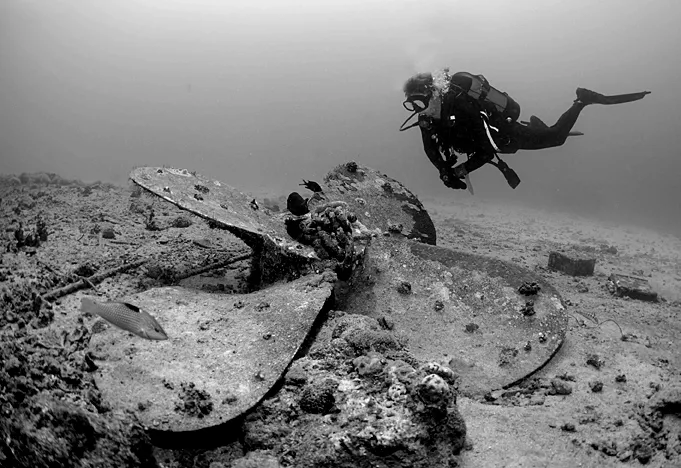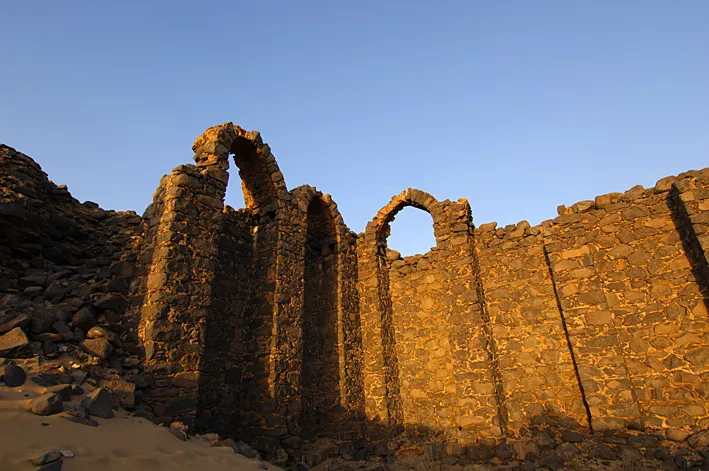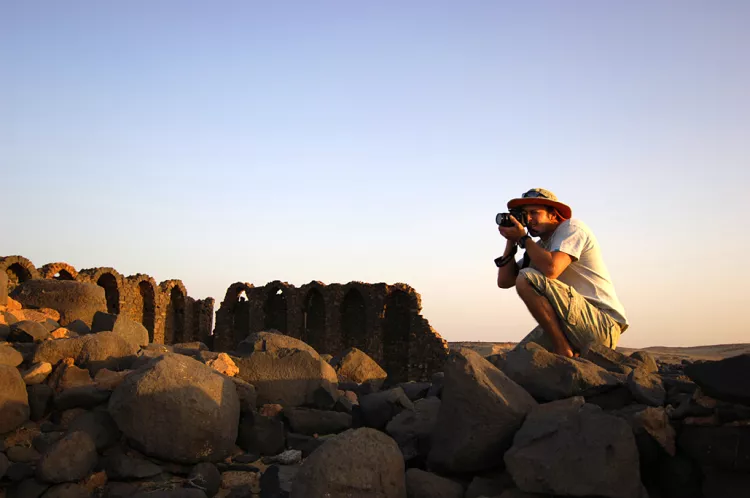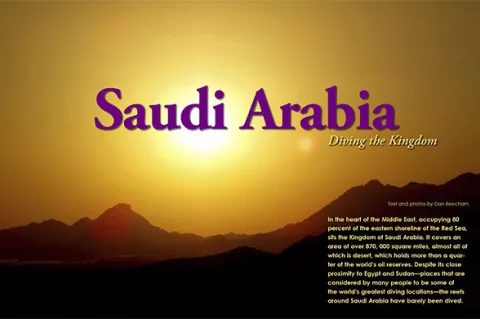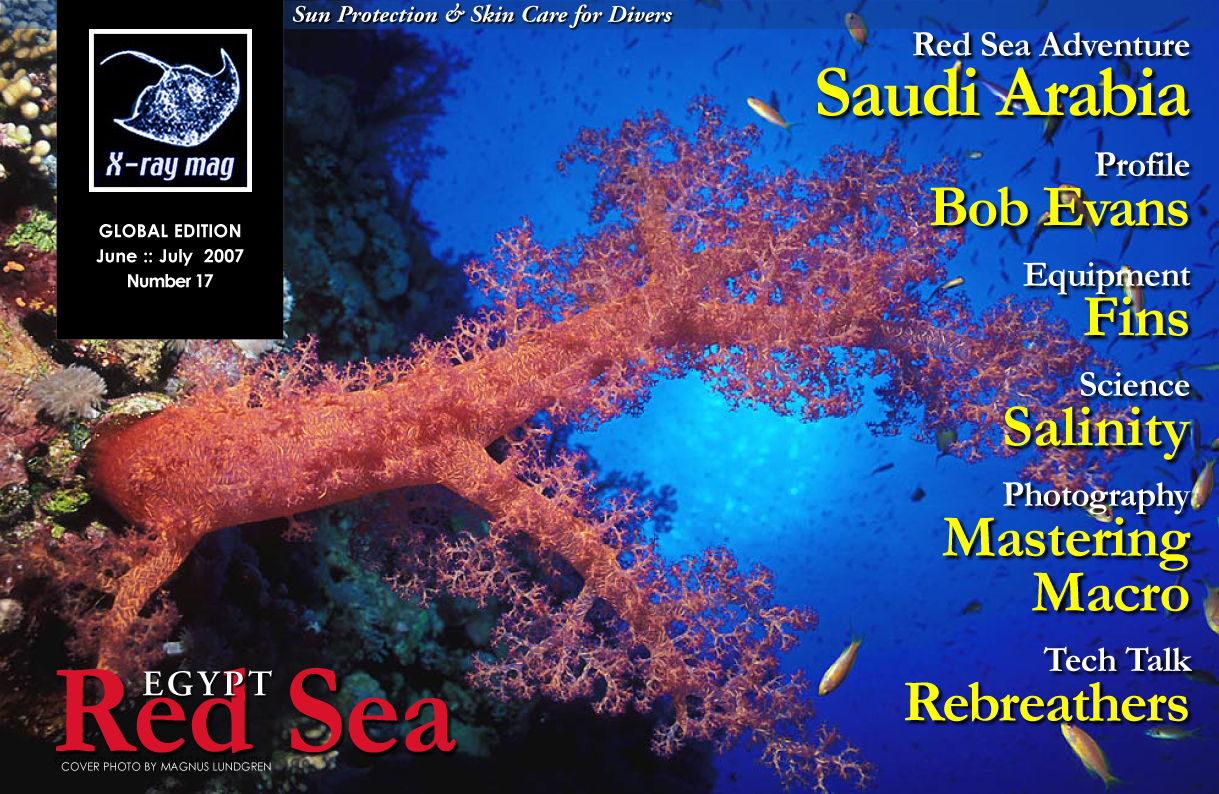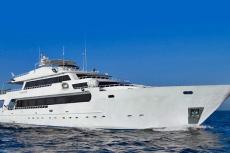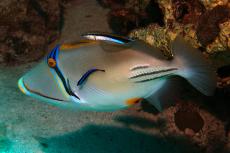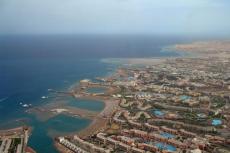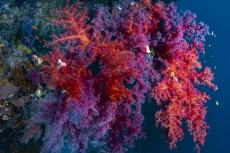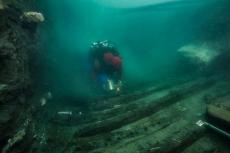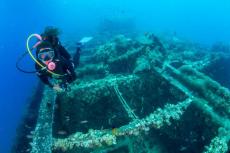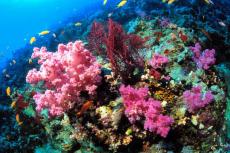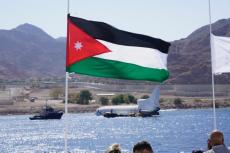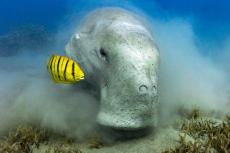In the heart of the Middle East, occupying 80 percent of the eastern shoreline of the Red Sea, sits the Kingdom of Saudi Arabia. It covers an area of over 870, 000 square miles, almost all of which is desert, which holds more than a quarter of the world’s oil reserves. Despite its close proximity to Egypt and Sudan—places that are considered by many people to be some of the world’s greatest diving locations—the reefs around Saudi Arabia have barely been dived.
Contributed by
Saudi Arabia is infamous for being difficult, and oftentimes impossible to get into. At the same time, it welcomes with open arms thousands of expatriate workers every year, as well as over 3.5 million tourists annually, almost entirely comprised of pilgrims performing the Haj or Umrah. If you’re non-Muslim and are not sponsored by an employer in Saudi, attaining a visit visa is nigh on impossible.
It’s this strict level of control, as well as the continued threat of terrorist activities that keeps the majority of westerners out of the country. The problems do not stop there however.
Saudi Arabia is a country that is struggling to strike a balance between its roots, which are firmly planted in Islamist tradition, while its younger generation demands reform to a modern, more western society. Many Saudi’s want to defend the Kingdom’s fiercely Muslim character, returning to 18th century ideals where Islam reigned supreme, and where foreigners were not welcome.
Others wish for change; there is talk of democracy and reforms on many issues including women’s rights, a topic that is especially divisive.
The modern generation is demanding change, and it is slowly happening; western commercialism is increasingly impinging upon Islamic ideals.
Because of these reforms, there is tension in the Kingdom, so visiting or living in Saudi presents new challenges everyday. Clashes with the authorities including the religious police, or Mutawwa, are not uncommon. The Mutawwa strictly enforce the many social rules of Islamic culture.
Women especially must be mindful of theses rules, covering themselves head to toe in the traditional Abaya, not being able to work, go out in public unescorted and not being allowed to drive are just a few of the issues that must be overcome.
It is all of these strict rules as well as the issues relating to visit visas that either stop or put people off diving in Saudi.
The opportunity to dive untouched, pristine reefs or discover new wrecks is impossible in other parts of the Red Sea. Because of this, many people (this writer included) who are given the opportunity to visit a country that normally sits so far out of bounds, count themselves lucky that they can enter, explore and dive a part of the world that is generally off limits to westerners; Saudi Arabia can be considered the final frontier of diving in the Middle-East.
The Oil Giant
Sadly, Saudi is not known for it’s diving, there’s only one thing its famous for; Oil. The 8.5 million barrels of crude that are pumped out of Saudi Arabia every day ensure that the Kingdom remains a driving force in the global economy. Unfortunately, the oil industry and the preservation of pristine marine environments do not make good bedfellows.
There are large areas of reef that remain untouched, but in other places the environment is very much neglected; extensive damage caused by oil extraction or the reclamation of land for refineries has wiped out entire ecosystems. In 1991 during the Gulf War, eight billion barrels of oil were released into the Arabian Gulf on the Saudi’s Eastern coastline by retreating Iraqi forces. There are fears in many that a similar event could one day happen in the Red Sea; the damage this could cause is unimaginable.
The threat of terrorist attacks remains very real today. Post 9/11, many expatriate workers who had called Saudi home for a long time moved away to neighbouring countries in the Middle East, in response to terror attacks on housing compounds and foreign embassies. Numbers of ex-pats in Saudi Arabia are steadily increasing nowadays, and with it, the diving scene, but once in a while an event will occur to shake everybody’s confidence over safety in the Kingdom.
In February this year, four French tourists were killed near Jeddah, and in April, authorities arrested more than 150 terrorists, seizing weapons and bomb-making equipment that was intended for one of Saudi’s largest oil refineries.
Environmental issues
Some areas of the Red Sea that lie within Saudi waters are thankfully now protected. This is largely thanks to the work of active marine conservation groups. National Parks and “no-go” zones where fishing is completely prohibited have been created. This is often enforced, but unfortunately, not always. In other areas, fishing goes completely unchecked, but mainly consists of local fishermen on small boats. There is little commercial fishing in Saudi as there is simply more money to be made in the oil industry.
Shark meat is unfortunately very popular, and small sharks often appear in abundance on the fish counters in large supermarkets. Row upon row of juvenile reef shark and Hammerhead Shark adorn these counters. Even though I see more sharks in Saudi waters than I have in other parts of the Red Sea, I regret to say that I see more sharks on the fish counter during my weekly shop than I would during a whole week of diving. The shark meat generally sells for around ten Saudi Riyals per kilo—less than three US dollars.
Much of the coastline of Arabia is currently undergoing major changes. Reclamation of land for huge offshore projects is very common in the Middle East, and countries including Bahrain, the UAE and Qatar are creating huge offshore housing developments to try and attract overseas investors and strengthen economies.
Dredging recently began off the sleepy town of Rabigh, which sits north of Jeddah in preparation for an ambitious building project—the King Abdullah Economic City. This kind of construction will obviously effect the local ecosystems. Infact, most of the local ecosystem will be covered in hundreds of tonnes of land-fill, but it’s difficult to comprehend how far-reaching the effects of this construction will be, and what effects the increased air and water pollution will have.
Projects such as the iconic Palm Jemeriah in Dubai have disrupted the local ecosystems in more ways than was originally predicted, but thankfully now a lot off effort is being put into undoing this damage. Only time will tell what effect the King Abdullah Economic City will have on the local and surrounding ecosystems.
Spear-fishing is very popular in Saudi, both within the local communities and with the population of Southeast Asian workers that are present in Jeddah as well as the rest of the country. Unfortunately, this has damaged populations of many species of large reef fish. The reefs further offshore have been less affected by this though and remain healthy.
Jeddah
The city of Jeddah is where much of the diving in Saudi Arabia is focused. Jeddah attracts large numbers of expatriate workers attracted to the Kingdom by the big salaries that are often available when working for large Saudi companies. Jeddah is seen to be more liberal than cities such as Riyadh, the capital, and as such, there has long been an expat community present. There are a number of dive shops and boat operators that cater for this diving scene.
Shore diving is very popular in Saudi, as you often face difficulties with the local authorities when planning boat trips. Permission must be attained ahead of time before any private vessel may head out to sea, and failure to do so can result in heavy penalties including confiscation of diving permits. Saudi Arabia continues to face a big problem with illegal immigration from poorer neighbouring countries, and the coast-guard’s strict rules are an effort to reduce this problem, as well as curb smuggling of illegal contraband. Because of these regulations, many Hotel chains have set-up small dive operations in private beaches.
Here, you pay a nominal entry fee to get what can feel like a little piece of paradise, away from the strict every day rules of Saudi. Men and women can socialize together, which is normally forbidden, and women can remove their Abaya without fear of punishments from the authorities. Many people shore dive from these private beaches, and the reefs are very healthy, although sometimes the visibility can be poor due to sedimentation from construction projects.
To get to the more impressive sites you need to get offshore. Reefs such as Abu Faramish, Abu Madafi and Shi’b al Kebir provide truly world class diving. In these areas, visibility is often excellent, 20-25m. The quality and diversity of soft and hard corals is very high, and you’ll spot all the usual Red Sea reef fish alongside some larger specimens that are generally more difficult to see in more commonly dived areas.
Jeddah port is the busiest port in Saudi, and as one would expect, a few of the ships on their way to or from the port have inevitably ended up on the bottom of the sea. Mismari, the Cable Wreck and Chicken Wreck are just a few of the wrecks that are easily accessible lying in just 20-30meters of water, so allowing for long leisurely wreck dives.
Away from the more frequented diving areas, there exists miles of coastline that remains largely unexplored by western divers. From personal experience, the diving in these areas can differ dramatically. Head south and visibility generally deteriorates, and there are some areas that are completely devoid of life. Head north, near to Wedjh, and you can drop in on spots where there are huge numbers of reef fish and pelagic fish including Tuna, Spanish Mackrel and Barracuda as well as healthy numbers of sharks including
Hammerheads, Silvertips and Silkys. When you look at the size of the coastline and how little of it has been developed, it’s tantalising to think what wanders are waiting to be discovered.
For now, divers who are lucky enough to gain access to the Kingdom of Saudi Arabia can enjoy an abundance of beautiful reefs, devoid of the crowds of divers found at many popular sites in other areas of the Red Sea. Maybe one day, when things have changed and relaxed in Saudi Arabia, people will be able to visit and appreciate what’s there, not only the diving, but also the historical sites, beautiful deserts and wildlife.
Let’s just hope that the authorities realise what potential they have lying right beneath their noses, or beneath the waves, and that they must implement measures to properly protect the reef and regulate the numbers and movements of divers.
It’s sad that so few people have been able to experience the amazing diving that is on offer in Saudi Arabia, but in ways it’s nice knowing that there are places out there that remain untouched, pristine and waiting to be discovered. ■

